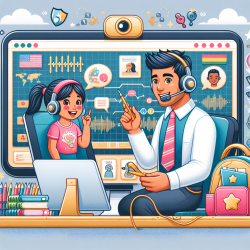The Surprising Truth About Online Therapy: What Every Speech Therapist Needs to Know!
As speech therapists, our mission is to empower children to reach their full potential through effective communication. In an era where technology is increasingly integrated into educational settings, online therapy has emerged as a revolutionary tool. Yet, despite its growing popularity, many therapists still have questions about its efficacy and potential benefits.
Data-Driven Insights into Online Therapy
Research has consistently shown that online therapy can be as effective as traditional in-person sessions, especially when delivered through platforms designed specifically for therapeutic purposes, like TinyEYE. A study published in the Journal of Telemedicine and Telecare found that children who received speech therapy online showed significant improvements in their communication skills, comparable to those who attended face-to-face sessions.
One of the primary advantages of online therapy is its accessibility. Schools, particularly in remote or underserved areas, can benefit immensely from having access to specialized services without the geographical limitations. This ensures that every child, regardless of location, has the opportunity to receive high-quality speech therapy.
Why Online Therapy is a Game-Changer for Kids
Here are some key reasons why online therapy is making waves in the world of speech therapy:
- Flexibility: Online sessions can be scheduled at times that are convenient for both the therapist and the child, reducing the stress of travel and allowing for more consistent attendance.
- Engagement: Many online platforms incorporate interactive elements and gamification, which can make therapy sessions more engaging for children.
- Data Tracking: Online platforms often come with tools for tracking progress, allowing therapists to make data-driven decisions to tailor interventions more effectively.
Best Practices for Effective Online Therapy
To maximize the benefits of online therapy, speech therapists should consider the following best practices:
- Ensure a Distraction-Free Environment: Encourage parents or teachers to set up a quiet, distraction-free space for the child during sessions.
- Use High-Quality Equipment: Reliable internet connection and good quality audio-visual equipment are crucial for effective communication.
- Build Rapport: Just like in-person therapy, building a strong rapport with the child is essential. Use the first few sessions to get to know the child and make them feel comfortable.
Conclusion
Online therapy is not just a temporary solution; it is a transformative approach that can provide lasting benefits for children. By embracing this technology, speech therapists can ensure that they are providing the best possible outcomes for their young clients. As we continue to grow our knowledge and adapt to new methods, we remain committed to our core mission: helping every child find their voice.










